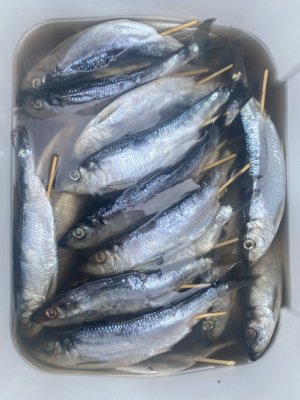westercoaster222
Member
Good evening all, I hope the season is treating you well.
We were fortunate enough to have a productive time out on the west coast to fill the freezer, so I am switching from tried and true methods for my local fishing to 'old fashioned style' methods for lack of a better word. Live herring mootching and bucktailing. Bucktailing seems straitforward enough, but very conditions driven.
For the mooching though, I am interested to hear if anyone has experience with this style of fishing. My efforts will be focused primarily on Wilby Shoals and Cape Mudge Lighthouse.
I am wondering about keeping herring alive on a small boat ie no room for cooler live well. Thinking bucket replenished with new water.
As well as terminal tackle. We have been out with a mentour on this style of fishing once before (no fish unfortunately), but this is his set up.
Mainline down to bead, 4-6oz slider, rubber hoochie head pinned with crib peg, bead chain, then #6 or #8 circle hook with #8 trebble snelled. Cirlce hook goes through the nostril, and the trebble trails free. I could only find #1 singles, and #6 trebbles. How does that sounds for a set up?
Currious to hear your experiences with this style of fishing, tides to focus on etc. Finding bait to jig and fish on is one thing, but I feel timing is more important.
We were fortunate enough to have a productive time out on the west coast to fill the freezer, so I am switching from tried and true methods for my local fishing to 'old fashioned style' methods for lack of a better word. Live herring mootching and bucktailing. Bucktailing seems straitforward enough, but very conditions driven.
For the mooching though, I am interested to hear if anyone has experience with this style of fishing. My efforts will be focused primarily on Wilby Shoals and Cape Mudge Lighthouse.
I am wondering about keeping herring alive on a small boat ie no room for cooler live well. Thinking bucket replenished with new water.
As well as terminal tackle. We have been out with a mentour on this style of fishing once before (no fish unfortunately), but this is his set up.
Mainline down to bead, 4-6oz slider, rubber hoochie head pinned with crib peg, bead chain, then #6 or #8 circle hook with #8 trebble snelled. Cirlce hook goes through the nostril, and the trebble trails free. I could only find #1 singles, and #6 trebbles. How does that sounds for a set up?
Currious to hear your experiences with this style of fishing, tides to focus on etc. Finding bait to jig and fish on is one thing, but I feel timing is more important.


